Ancient City Of Timgad: Largest Roman Settlement Ever Built In North Africa
A. Sutherland - AncientPages.com - The great ancient city of Timgad is the largest Roman settlement ever built in North Africa.
In AD 100, Emperor Trajan created the city on the northern slopes of the Aures Massif, approximately 170 km south of the Mediterranean coast.
Arch of Trajan in Timgad. Image credit: alioueche mokhtar - CC BY-SA 4.0
The city's ancient name was Thamugadi. Its still impressive ruins are located at the intersection of six roads, it served as a Roman military garrison town, and its plan, laid out with great precision, illustrates the skills of Roman urban planners. The outpost, established on a perfectly square grid, had to control one of the passes through the Aures Mountains to the Sahara.
The town soon outgrew its original plan, and additional structures were added outside the grid. Timgad - inhabited mainly by Roman veterans - was a peaceful town for several hundred years.
From the 3rd century, it became a center of Christian activity. The city was walled but not fortified. Initially designed for around 15,000, the city quickly outgrew its original specifications and spilled beyond the orthogonal grid in a more loosely organized fashion.
Buildings constructed entirely of stone were frequently restored during the Empire's time. In Timgad, only Roman citizens could live comfortable lives. However, the Romans knew they had to do much more in the area and not only for the Empire's citizens.
Timgad - Current situation at the excavation site. Image credit: Zenstar - CC BY-SA 4.0
The locals' resistance was strong, but the Romans managed to cope with the troublesome tribes by attracting these people to Timgad's buildings built entirely of stone, and the town had a much better social life than the surroundings.
They also offered suitable places to develop the commerce of local products. Soon, many natives joined the Roman Legion for a 25-year term to obtain Roman citizenship for themselves and their sons.
Pax Romana, a 200-Year-Long Period Of Stability within the Roman Empire, helped Timgad to become an attractive settlement. In just 50 years after Timgad's foundation, indigenous people mainly inhabited the city.
Timgad Was A Strong And Thriving Colony
The city's rapid growth occurred by the middle of the 2nd century. In several quarters, there were many temples, markets, baths, and Capitolium.
Timgad . Detail of the arch, east side with niche architecture. Image credit: Bachounda - CC BY-SA 3.0
Most of these buildings date from the Severan period (193 and 235 AD); it was a prosperous time when the city enjoyed its Golden Age, also attested by immense private residences.
Buildings constructed entirely of stone were frequently restored during the Empire: the Trajan Arch in the middle of the 2nd century, the Eastern gate in 146, and the Western gate under Emperor Marcus-Aurelius.
Timgad's underground reservoir collected water for the bathhouses, pools, and fountains, and there was also modern drainage, sewage system, and luxuries such as lavatories that could be heated during winter.
Timgad's theatre, a library, and a forum delivered many entertainments. People enjoyed fountains and bathhouses with walls and floors decorated with beautiful mosaics displaying pagan mythological scenes. Today, the city's marketplace, the so-called Timgadu Bazaar with benches and stone tables, is considered much better preserved than in other Roman cities.
Timgad Arch And Library With 3,000 Scrolls
One of the impressive ancient structures was the triumphal arch. The Arch of Trajan ( partially restored in 1900), also known as the Timgad Arch, was built with three arches and mainly of sandstone.
It remains unknown when the Library at Timgad was built, but it is known that it was a gift to the Roman people by Julius Quintianus Flavius Rogatianus.
Timgad - ruins. Three-quarter view of the west side. Image credit: Zinou2go - CC BY-SA 3.0
The library is a one-story building with niches for scrolls and cabinets containing a book warehouse. Initially, it occupied a rectangular area (eighty-one feet (24.69 meters long by seventy-seven feet (23.47 meters) wide. Once, it was a fully developed library system indicating the people's high standard of learning and culture. It is believed that it could have stored 3,000 scrolls.
In the city, the ruins of a huge amphitheater, sixty meters in diameter and able to accommodate 4,000 spectators, have been preserved.
The Destruction Of Timgad
Timgad was a celebrated bishopric during the Christian period, but the Vandal invasion of the fifth century destroyed the city's prosperity. Finally, the Arab invasion left Timgad totally destroyed. After the 8th century, the city ceased to be inhabited.
Written by – A. Sutherland - AncientPages.com Senior Staff Writer
Updated on November 16, 2023
Copyright © AncientPages.com All rights reserved. This material may not be published, broadcast, rewritten or redistributed in whole or part without the express written permission of AncientPages.com
Expand for referencesMore From Ancient Pages
-
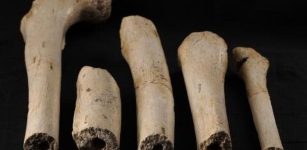 Ancient Human Remains A The Sima De Los Huesos Site Investigated
Archaeology | Mar 15, 2023
Ancient Human Remains A The Sima De Los Huesos Site Investigated
Archaeology | Mar 15, 2023 -
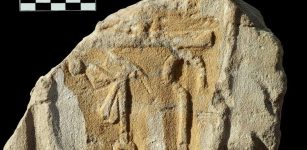 Gebel El Silsila: Remains Of Long-Lost New Kingdom Temple Found
Civilizations | May 19, 2015
Gebel El Silsila: Remains Of Long-Lost New Kingdom Temple Found
Civilizations | May 19, 2015 -
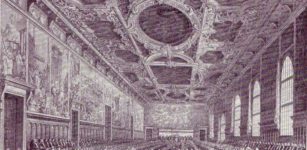 Ancient Societies Ruled By Ruthless Dictators – Collapsed
Civilizations | Oct 18, 2020
Ancient Societies Ruled By Ruthless Dictators – Collapsed
Civilizations | Oct 18, 2020 -
 Archaeologists Encounter A 1,500-Year-Old Mystery In Kent, UK
Archaeology | Mar 16, 2022
Archaeologists Encounter A 1,500-Year-Old Mystery In Kent, UK
Archaeology | Mar 16, 2022 -
 What Were The Most Important Medieval Marketplace Rules?
Ancient History Facts | Mar 25, 2024
What Were The Most Important Medieval Marketplace Rules?
Ancient History Facts | Mar 25, 2024 -
 Wendigo: Cannibalistic Shapeshifter In Mythology Of Indians Of North America And Canada
Featured Stories | Sep 3, 2016
Wendigo: Cannibalistic Shapeshifter In Mythology Of Indians Of North America And Canada
Featured Stories | Sep 3, 2016 -
 Mystery Of The Patagonian Giants: Europe’s Lost Race From The ‘Land Of The Bigfeet’
Featured Stories | Jun 20, 2020
Mystery Of The Patagonian Giants: Europe’s Lost Race From The ‘Land Of The Bigfeet’
Featured Stories | Jun 20, 2020 -
 Mysterious Grave Of King Valdemar IV Atterdag – Will The 600-Year-Old Historical Puzzle Ever Be Solved?
Featured Stories | Jul 14, 2018
Mysterious Grave Of King Valdemar IV Atterdag – Will The 600-Year-Old Historical Puzzle Ever Be Solved?
Featured Stories | Jul 14, 2018 -
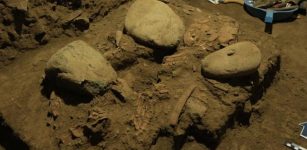 Mysterious Toaleans – Remains Of Unknown Humans Who Lived 8,000 Years Ago Discovered In The Leang Panninge Cave
Archaeology | Aug 26, 2021
Mysterious Toaleans – Remains Of Unknown Humans Who Lived 8,000 Years Ago Discovered In The Leang Panninge Cave
Archaeology | Aug 26, 2021 -
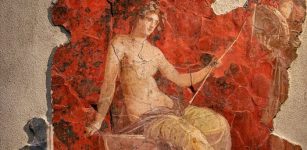 Never-Before-Seen Frescoes From Hadrian’s Time Unveiled At Ancient Roman Baths
Archaeology | Jun 27, 2022
Never-Before-Seen Frescoes From Hadrian’s Time Unveiled At Ancient Roman Baths
Archaeology | Jun 27, 2022 -
 82 Mysterious 3,000-Year-Old Pits Discovered In Sweden – Bronze Age Cooking Pits And Ancient Ceremonial Center?
Archaeology | Jun 13, 2017
82 Mysterious 3,000-Year-Old Pits Discovered In Sweden – Bronze Age Cooking Pits And Ancient Ceremonial Center?
Archaeology | Jun 13, 2017 -
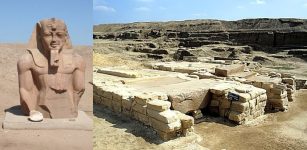 Pi-Ramesse: Pharaoh Ramesses II’s Great Capital Surprisingly Identified In Two Locations
Featured Stories | Jun 9, 2022
Pi-Ramesse: Pharaoh Ramesses II’s Great Capital Surprisingly Identified In Two Locations
Featured Stories | Jun 9, 2022 -
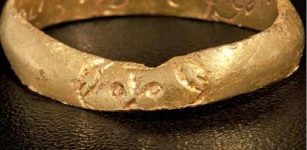 Skulls and inscriptions on three rings found by archaeologists in Wales
Artifacts | Aug 29, 2015
Skulls and inscriptions on three rings found by archaeologists in Wales
Artifacts | Aug 29, 2015 -
 Baby God Hermes Started His Life As A Liar And Trickster
Featured Stories | Dec 25, 2020
Baby God Hermes Started His Life As A Liar And Trickster
Featured Stories | Dec 25, 2020 -
 Ancient Mystery Of The Enigmatic ‘Cat Men’ – The Arrival – Part 1
Featured Stories | Jan 17, 2021
Ancient Mystery Of The Enigmatic ‘Cat Men’ – The Arrival – Part 1
Featured Stories | Jan 17, 2021 -
 Pompey The Great: One Of Roman Empire’s Most Successful Military Commanders
Featured Stories | Jun 14, 2019
Pompey The Great: One Of Roman Empire’s Most Successful Military Commanders
Featured Stories | Jun 14, 2019 -
 Maori God Pourangahua And His Flying Bird Traversing The Ancient Skies
Featured Stories | Oct 4, 2015
Maori God Pourangahua And His Flying Bird Traversing The Ancient Skies
Featured Stories | Oct 4, 2015 -
 2,000-Year-Old Rock Art Sites Discovered In Jalapão, Brazil
Archaeology | Mar 11, 2024
2,000-Year-Old Rock Art Sites Discovered In Jalapão, Brazil
Archaeology | Mar 11, 2024 -
 Hadrian’s Wall: North-West Frontier Of The Roman Empire For Nearly 300 Years
Featured Stories | Sep 1, 2020
Hadrian’s Wall: North-West Frontier Of The Roman Empire For Nearly 300 Years
Featured Stories | Sep 1, 2020 -
 What Is A Mural Of Tepoztēcatl, Aztec Rabbit God Of Alcohol Doing In A Mexican Church?
Archaeology | Oct 15, 2022
What Is A Mural Of Tepoztēcatl, Aztec Rabbit God Of Alcohol Doing In A Mexican Church?
Archaeology | Oct 15, 2022




